Smithology: Typing and trench coats
Andrew drove it in qualifying. By his own admission, he was slow. Still feeling things out. Not least because we each had a sinking feeling, hinted at but never properly discussed, that the engine was perhaps maybe possibly inching up on being smack in the middle of a process that could, if one were less than charitable, almost certainly potentially kind of resemble a blowing-up.
It did not blow up, then.
Later, though, definitely.
What happens when the 96-horse, 1275-cc, 8000-rpm four in a ’66 Mini Cooper S race car eats dirt? For that I turn to the man himself—the car’s owner—and to boldface quote:
“It died quite graciously.”
– Andrew Fox
Like the car, Andrew was English. When he said that, I had no idea what he meant but laughed anyway. Accent and all, it fit.

It was an October Saturday at Laguna Seca, near Monterey, in Northern California. The track was hosting a vintage-race event called Velocity Invitational. A while back, Velocity’s organizers asked if I would guest-drive in this year’s races. We’ll fly you out, they said, you’ll meet this nice man and his Mini, share his car in our Mini-Mustang feature.
What is a Mini-Mustang feature? One hourlong race at dusk on Saturday, Sixties Minis and Sixties Mustangs only. Then another identical race on Sunday, same time. Each held a pit stop for driver change about halfway through. Those folks did not tell me—who could have known?—that Fox’s car would blow up before I got in. Or that he would be a deeply entertaining dude of infectious good cheer, one of those people just warped for neat cars and their stories. (A new pal! as my seven-year-old daughter says.)
Call this whole business a reminder that fate gives no one a heads-up, and that even if it did, you’d probably lose something in the process. Or, as my all-time favorite Dale Earnhardt quote holds, “Racing . . . is about friends.”
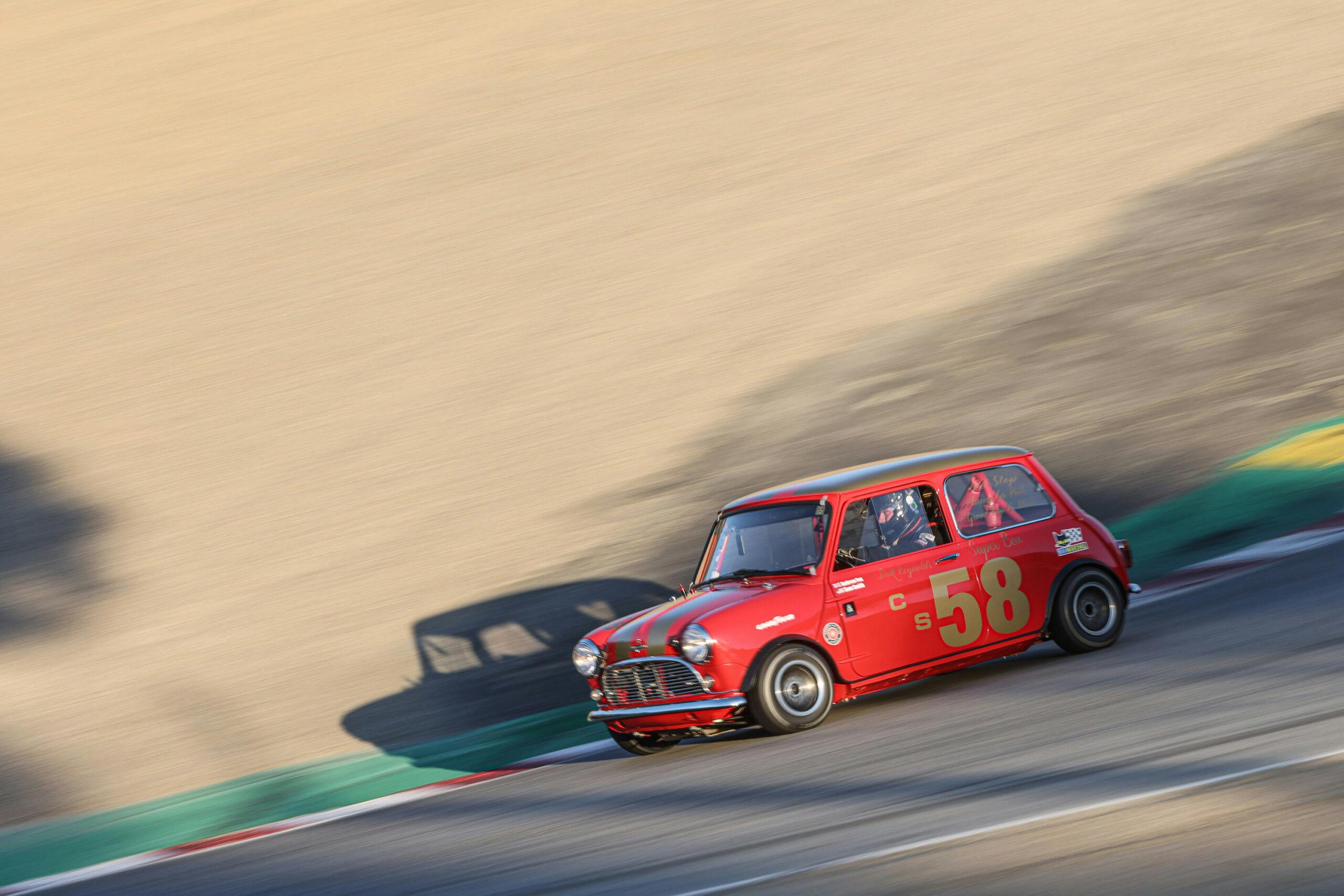
(That is a joke. Dale didn’t say that; racing is a famously awful way to make friends.)
(Actual favorite D.E. quote: “You can’t let one bad moment spoil a bunch of good ones.”)
Once the engine had eaten itself for dinner, Fox and I ejected for drinks at nearby restaurant, Baja Cantina. The bar there serves ferociously decent cocktails. An Offenhauser sits maybe ten feet from the well liquor, mounted on the wall.
I have been to Baja Cantina a lot over the years.
The Offy is great, but it was never for the Offy.
***
Ponder, for a moment, how a cuddly little vehicle can come to represent so much of a country’s culture, can give its name to a landmark piece of clothing, can change a nation with a workaday little engine that resembles nothing so much as a pair of typewriters in a trench coat.
Some problems demand small scale. Others require answers without American mass appeal. The original British Motor Corporation Mini lived in the Venn overlap. Made and sold in England from 1959 to 2000, the car met the U.S. only from ’60 to ’67. In the latter period, the English bought more than 800,000 examples; Americans took home around 10,000.

To make a long story short, England fit the car and we did not. Literally and figuratively. First, England is like a smaller America but also totally not. Second, driving a Mini every day takes a kind of stoic.
Old stereotype holds that the English persevere unlike the rest of us. It is occasionally true. The Mini spent 41 years in showrooms around the world, more than 5.3 million examples built. That success hung equally on hooty road manners and genius packaging. Into a ten-foot-long, 1300-pound pair of boxes on wheels, BMC engineer Alec Issigonis mounted that pushrod four (transversely, to save space) and a four-speed gearbox (in the engine’s sump and sharing its oil, ditto). Remarkably, along the way, he found room for four adults and a trunk.
The crankshaft sat ahead of the front axle. Suspension was by simple rubber cone. The number-two connecting rod stuck out ever so slightly from a hole in the crankcase, a clever engineering choice that—
Wait, no. False!
This is what I get for looking at Fox’s car after a rod bolt let go on Saturday. The pin bearing stuck into daylight like a kid in a Fifties sitcom poking his head through a fence: Gee, Mister, you seen my lost ball?
Such a cute little bearing! Even in racing, Minis wear teacup engines. Corners are the breed strength. In the Mini-Ford Velocity showdown, this was the whole point. A Sixties Mustang is heavier and less nimble, but there is also a V-8 underhood, at least in traditional road-race trim, and everyone knows what V-8s are good at.

Qualifying was Friday at dusk, one hour long. We figured Fox should drive 30 minutes, then hand the car to me. Four laps in, he lost fuel. Back in the paddock, I noticed how the main fuel pump was triggered by an ancient-looking oil-pressure switch. Andrew said oil pressure was fine, so I wondered aloud if the switch was dying. Shortly after, we had the auxiliary pump, formerly used for starting, wired to run full-time, engine happy again, everything gravy.
Har har har, I now say, you can maybe see where this is going, I say. For that matter, I swore I heard, on Friday evening in the paddock, a faint noise not entirely unlike rod knock, but you know, in the words of Danny Ric, late of Formula 1, sometimes you’ve just gotta lick the stamp.
On Saturday, Fox suggested I start the race, driving first. “If it’s going to blow up, you should at least get some time in it?”
I repeated his words, but slower, with a deer-in-headlights face. To his credit, he laughed. At the green flag, he got half a lap. Then that kid in the engine’s fence.
“As I was coming out of Turn 4,” he said later, “everything felt good . . . then pop, James-Bond smoke screen. I skidded on my own oil.”
In high school, I learned to wrench by working on oily British stuff. Later, before journalism, I sold parts at a Jaguar dealer. (Brief job summary: We made money.) When Fox came in on the hook, the grille drooled 15W-50. In my head, Vera Lynn sang, “There’ll Always Be an England.”
On Saturday night, at Baja Cantina, over a gin drink that looked like the ocean, I listened as Fox was chipper about failure. A good human. I was reminded of Admiral Nelson, the British naval hero who died at sea. For the journey home, they pickled him in brandy.
Around this time, my friend Efrain Oliveres, a Formula Ford guy from L.A., texted about the race. Broken car, I said. Rod.
“The great thing about Minis,” he offered, “is that, when you break the engine, you also break the gearbox.”
I wanted to type back, but . . . graciously?

On paper, we return to places we like because they have made us happy. I’ve been to Laguna dozens of times. Each of those visits began with an optimistic little drive at dawn, some bright Friday or Saturday, through the main gates.
A shifter broke once, in Turn 5, irreparable, killing the rest of the weekend. A few years later, a steering knuckle sheared in the fourth-gear Turn 9 and nearly killed me. Several engines under my command in that arena have, as fox hunters used to say, met the great whipper. I have twice grown so sick on those grounds as to puke into paddock trash cans. This is not even the entire list.
Morning optimism is easy. But why, even on the worst of those days, was I never thrilled to leave?
A poet might comment here on hiking the long and dusty hill to Laguna’s famous Corkscrew, turquoise ocean in the distance. Or maybe they’d riff on the track’s nearly 70 years of history, or that midday sun warm like a blanket, or even just the cozy little poke in the eye that is a noisy and financially unstable old road course somehow kept alive in a land where the ZIP code is spelled N-I-M-B-Y.
I am not a poet. I will simply admit that it is important to occasionally be an irredeemable sucker for something.
Would it be better, you might ask, to stay home, avoid the risk, save the trouble?
Pardon my French, but—like hell it would be, you know?
***
I drove the car only once. A quick loop around Laguna’s perimeter roads on Saturday, to feel things out, when it still looked like we might go racing.
Those service roads! Sweeping views to the coast. To the west is South Boundary Road, running back to town atop a high ridge. Years ago, when Monterey’s Fort Ord was active, the Army used that ridge to test ordnance.

It is so very like the military to set up camp in one of the most beautiful piles of dirt we have, then pump that dirt full of shells. But then, Fort Ord was built in 1917. California was neither absurdly expensive nor jammed with people. Some currency spends differently when your wallet is full.
The Mini was a currency of its own. A nose that bops around, as the poet said, like Yeah, and a seating position that makes you kiss your knees. A riot.
For those ten minutes of hooting in and amid undetonated artillery, I thank not that number-two rod but definitely Andrew Fox. For the spectating giggle that was the Mini-vs.-Mustang race, we thank Velocity Invitational. To play us out of one of my favorite places, one more time, we turn again to the English, and again to Mrs. Vera Lynn:
We’ll meet again
Don’t know where
Don’t know when
But I know we’ll
meet again
some
sunny
day.
**
Full disclosure: Hagerty accepted flights and hospitality in order to attend the 2022 Velocity Invitational at WeatherTech Raceway Laguna Seca.
If you’re interested, our man Smith spent time that Sunday in Velocity’s livestream broadcast booth. He commentated on parts of the event, including the Mini-Mustang bit. That livestream can be viewed here. —Ed.


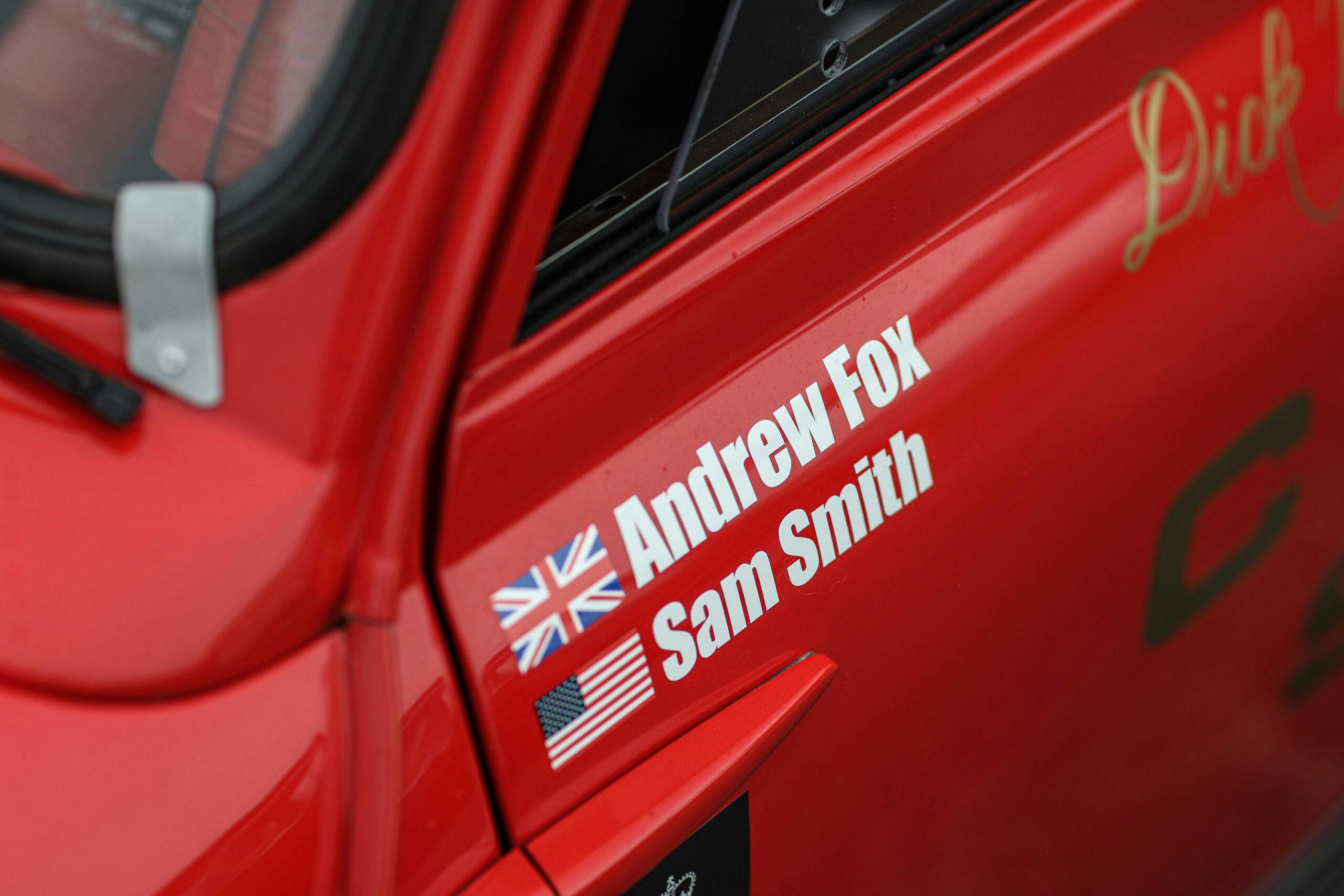
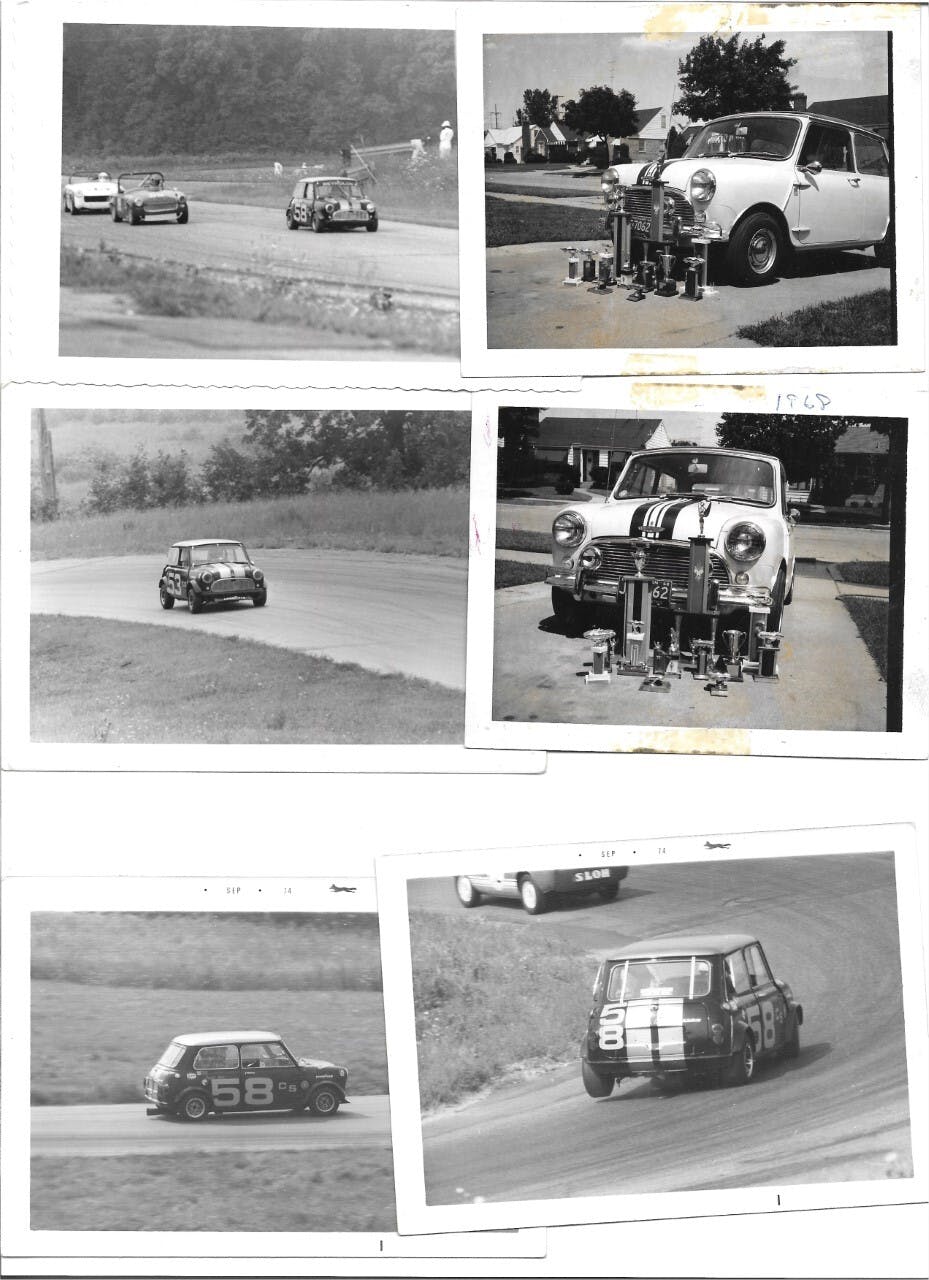
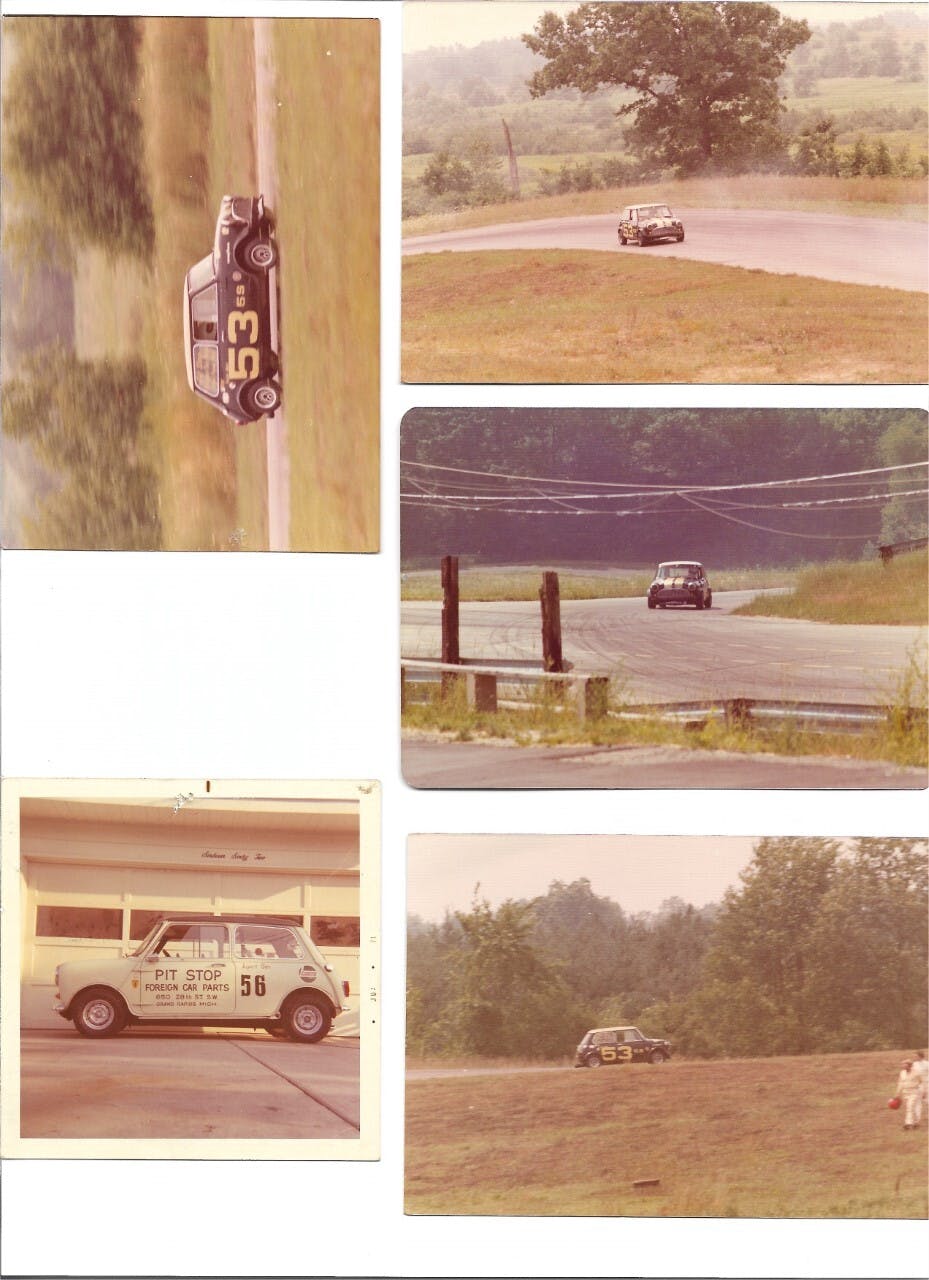
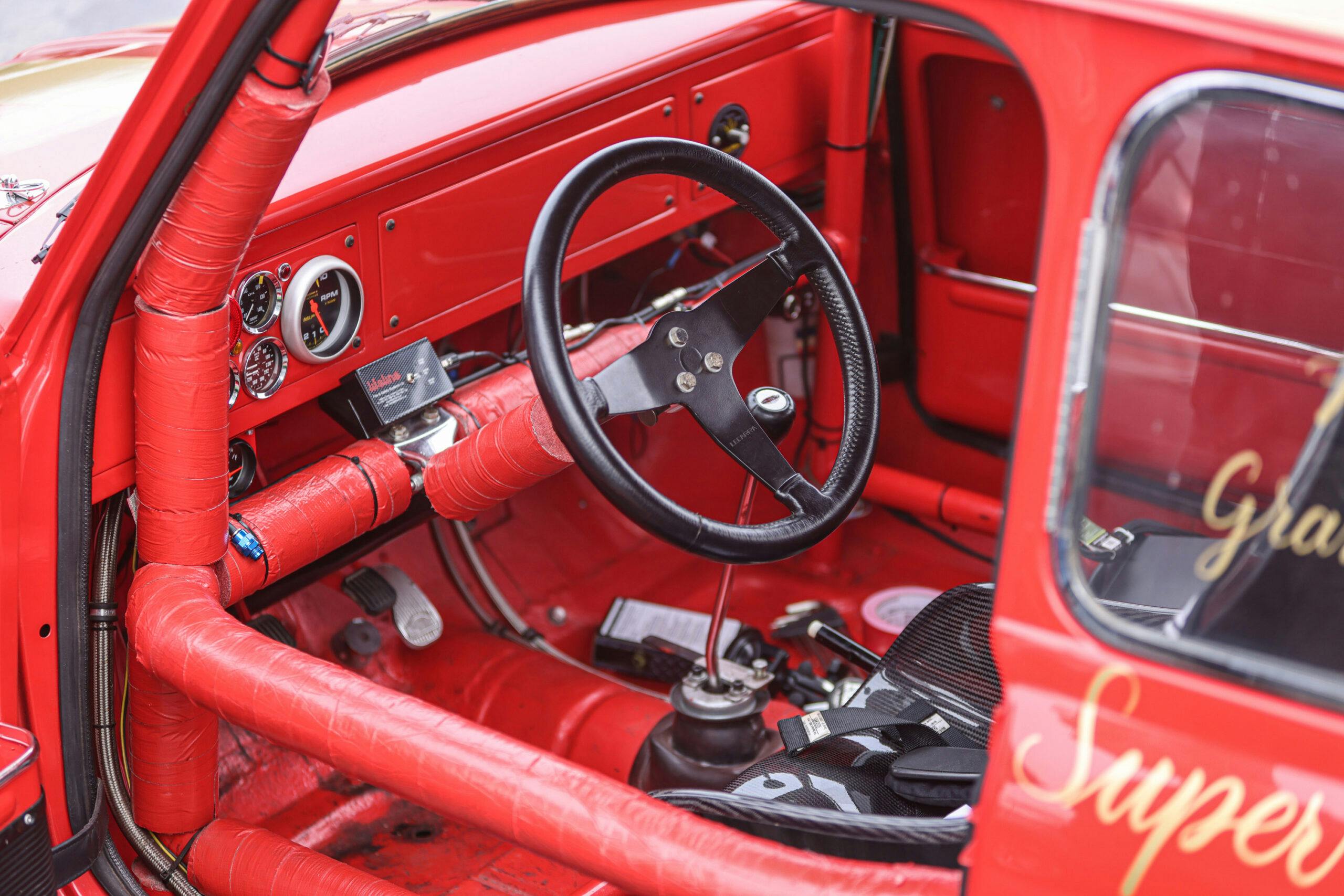
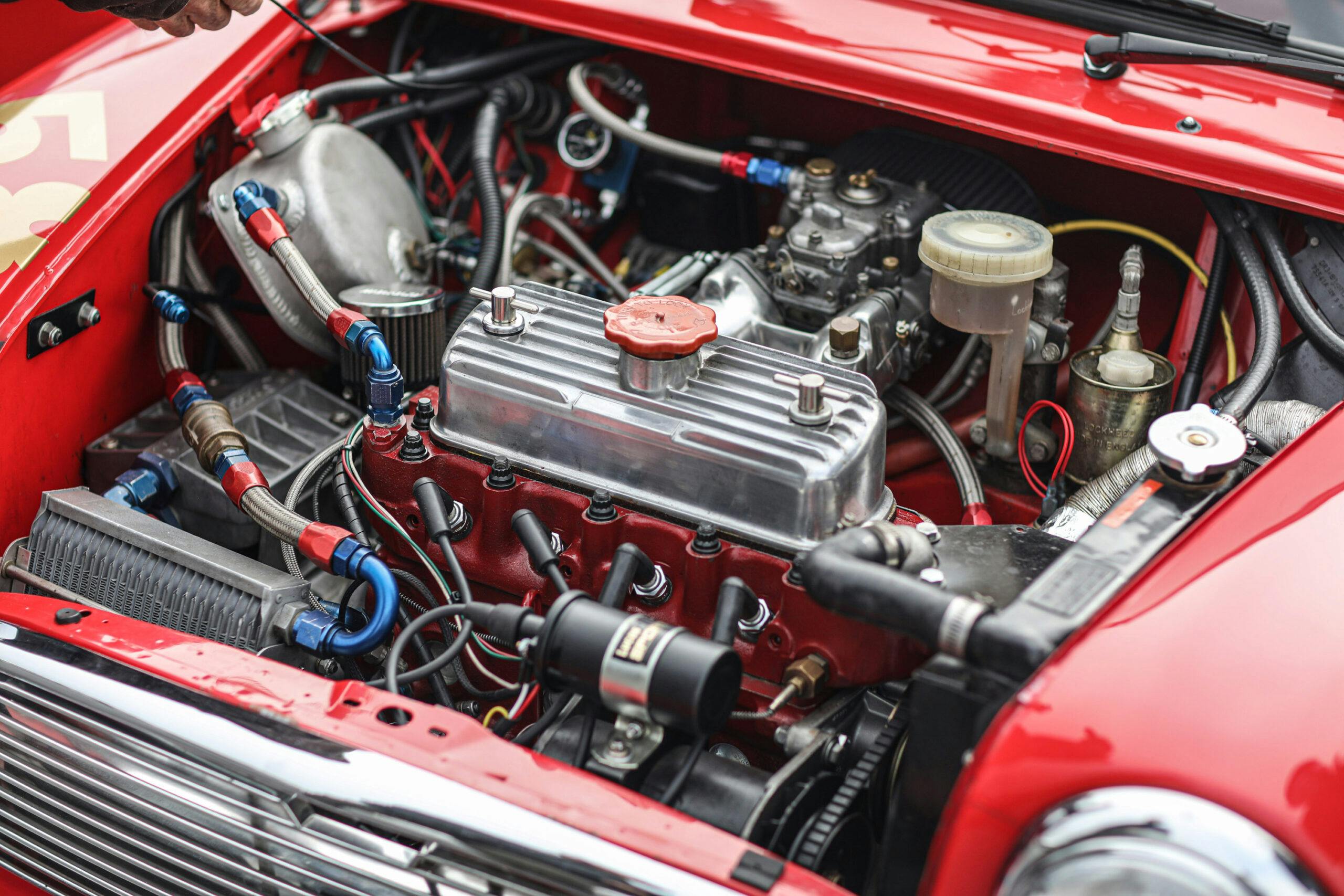
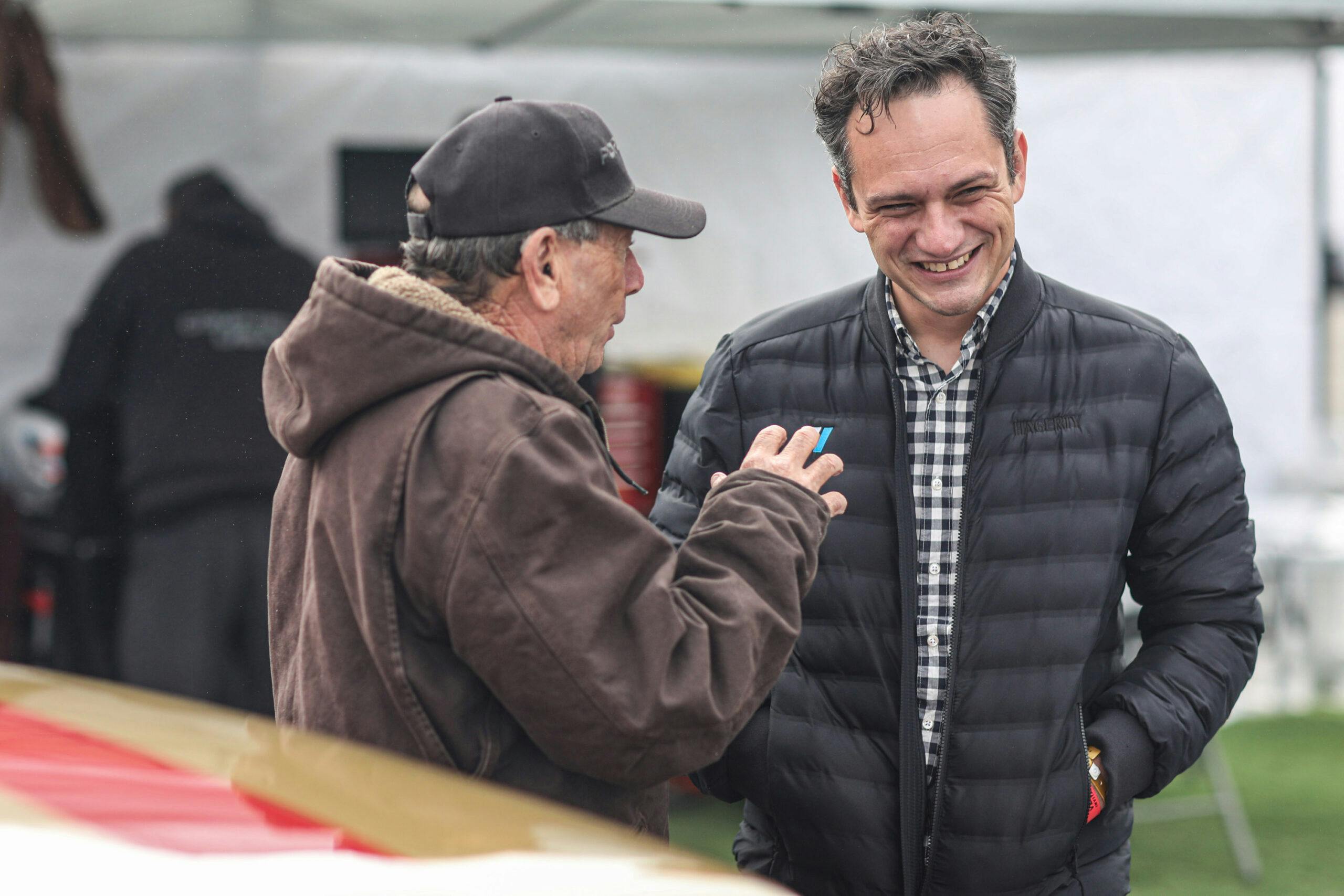
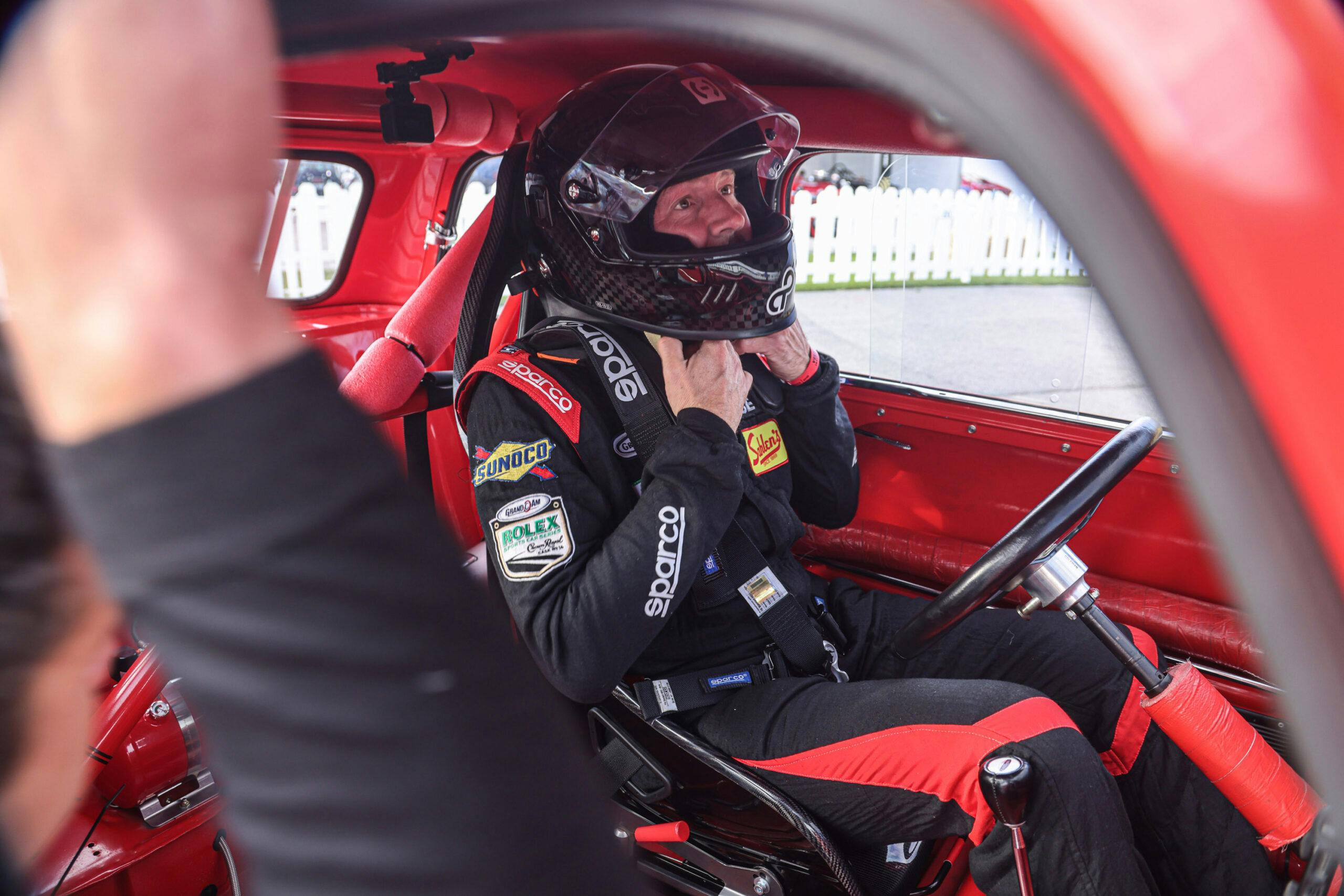
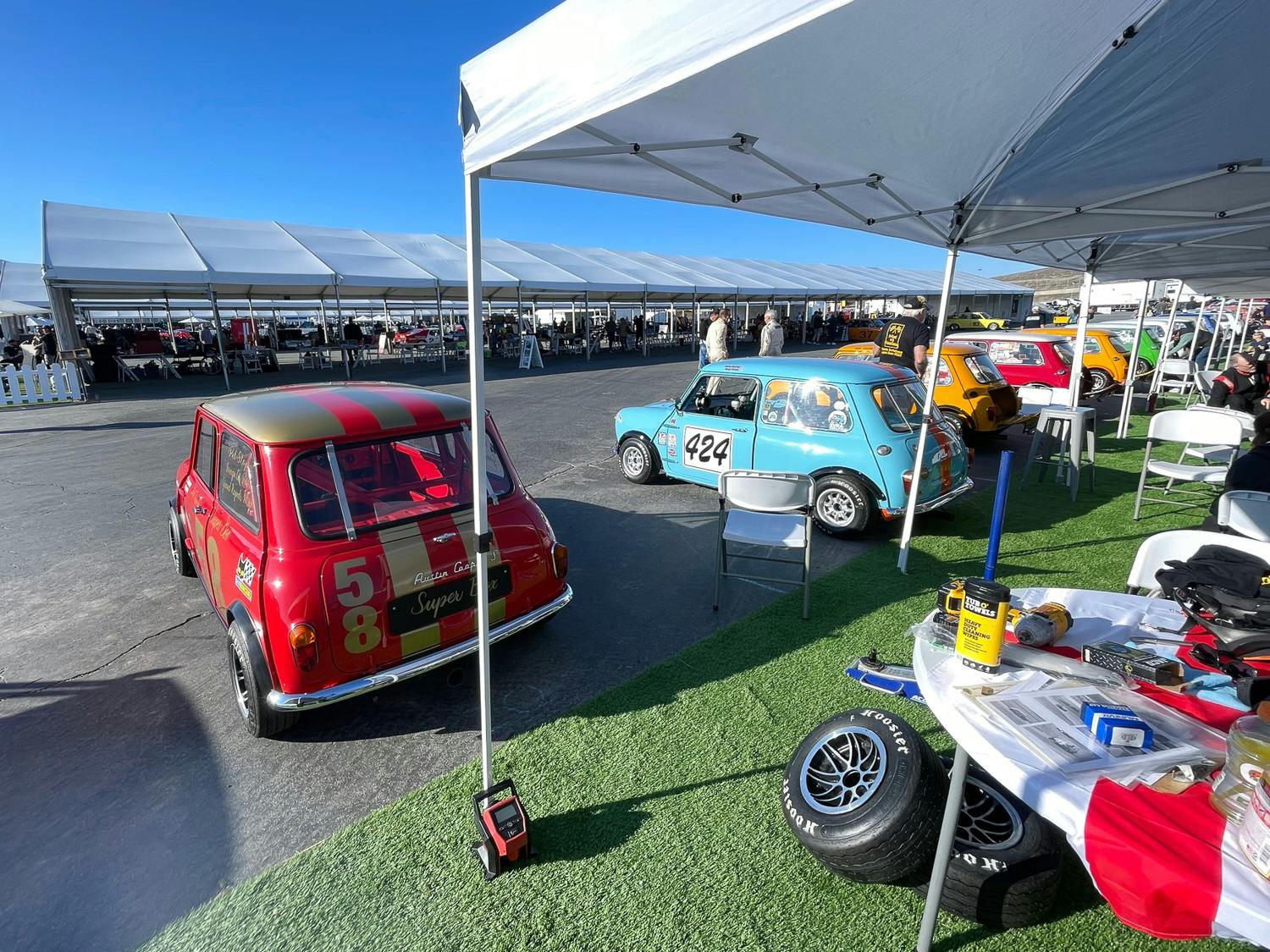
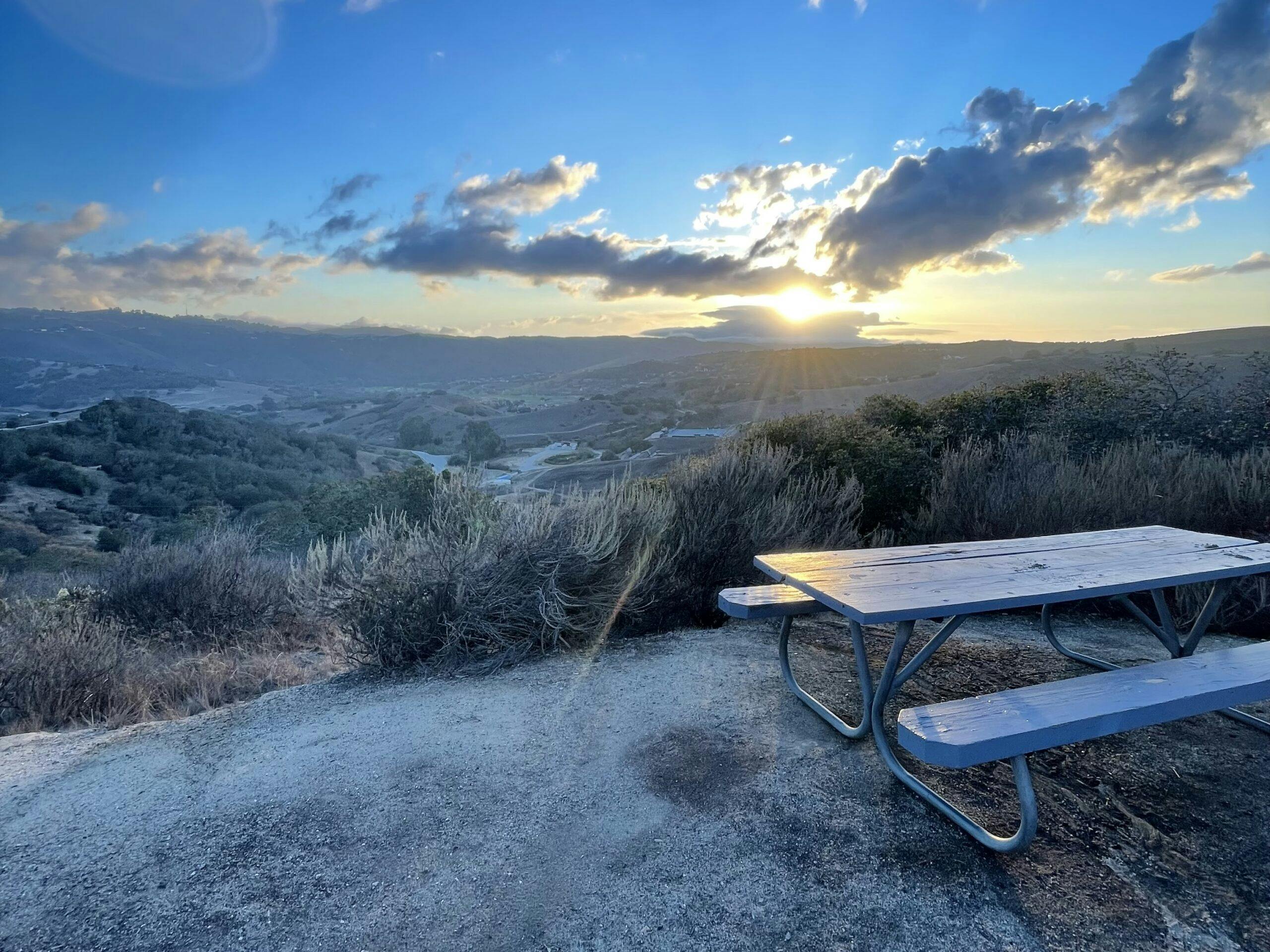
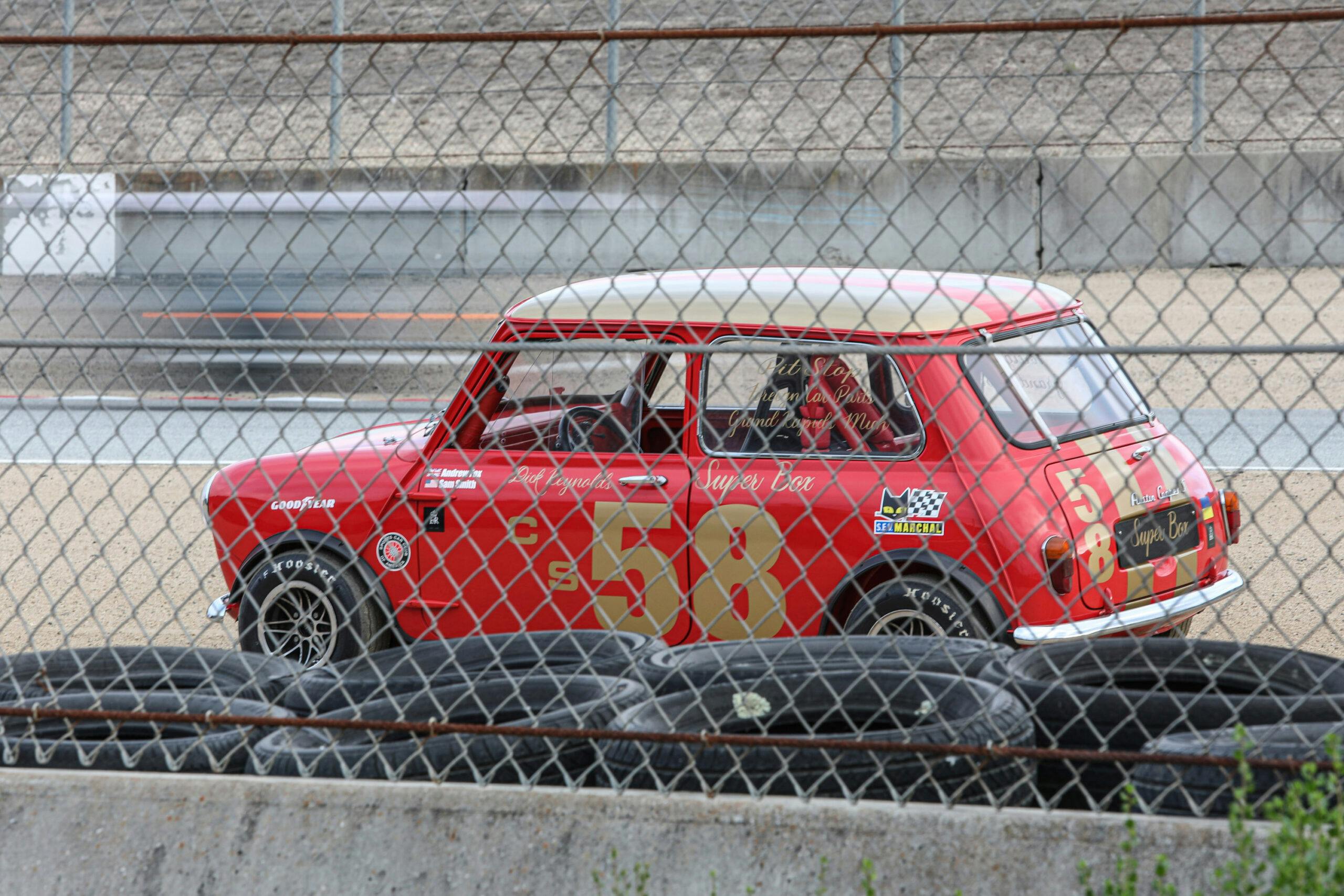
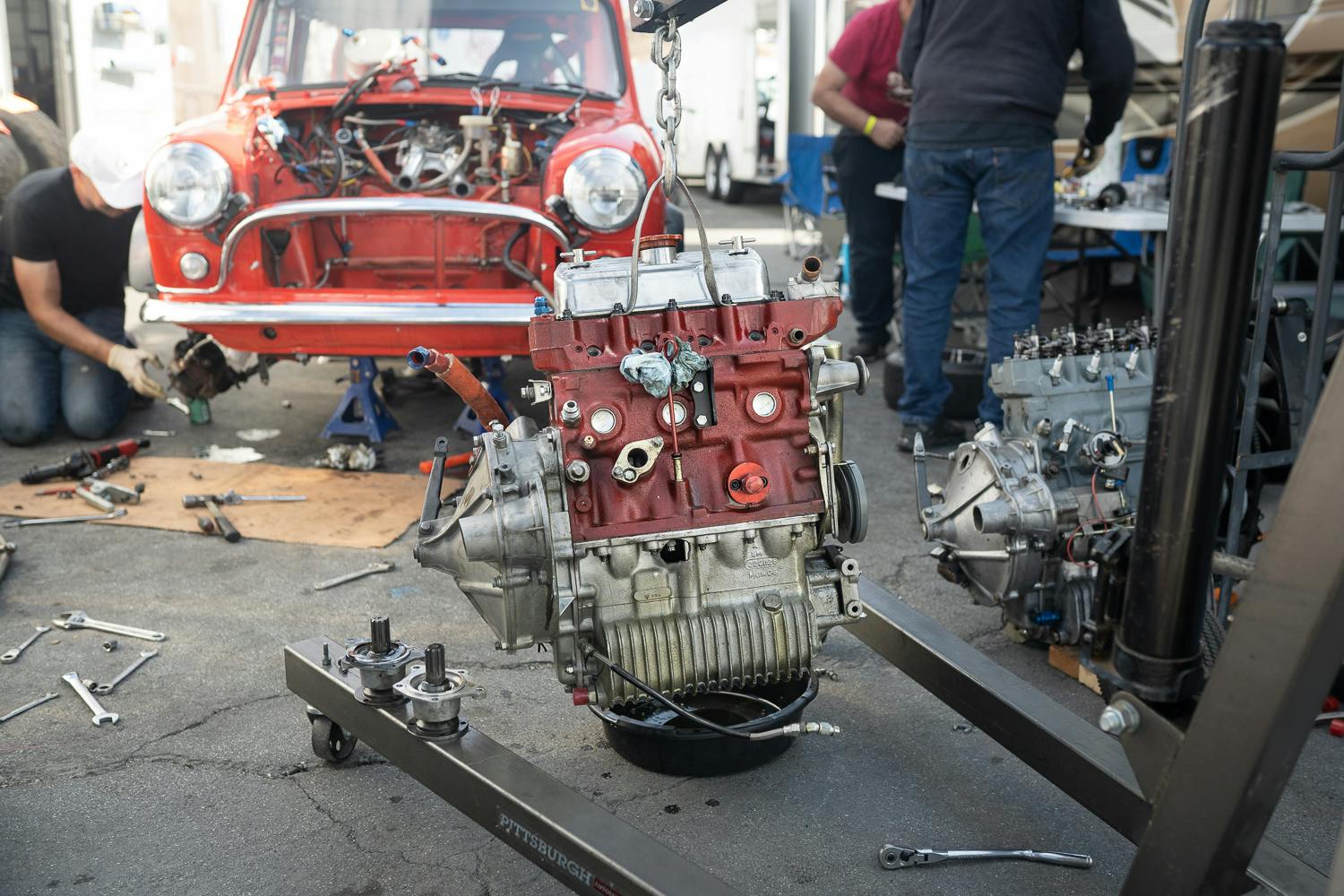


You’ve rounded off the story of the non-race quite nicely. Better luck next year.
Having Fox in the story was a saving grace. “Har, har, har” and Admiral Nelson getting pickled in brandy are the matter of Britain as much as King Arthur. (I assume you could already do the laugh, and that he might have supplied the Nelson anecdote.)
Now that I have the microphone, I would like to recommend to you and all a podcast called “The Rest is History,” which is Dan Carlin class with much more humor. Two brilliant Brits on a myriad of topics. Special mention goes to a recent series of episodes on the Battle of Trafalgar, with wonderful Lord Nelson anecdotes like the brandy pickling.
Ta ta, old stick.
Yes, good to hear a Dan Carlin reference. Still alive is he?
I’ve been to Laguna Seca a few times. Beautiful place. But as a spectator/driver no better place than Road America. Feels like being home there.
Minis are fun until not.
Ha! Yeah, I can see that. The engines get asked to do… a lot. For a long-stroke BMC thing of vaguely almost-not-quite agricultural origin, at least.
RA is just so immensely special. I grew up learned to drive and race in the Midwest. Am rarely there for work—maybe a handful of times in 15 years—so most of my memories there are tied to club events, lapping days, camping at pro races, that kind of thing.
I can’t say which place I like better, and would hate to have to pick. But Elkhart Lake just feels like home.
Carlin has a podcast called “Hardcore History Addendum,” where he pops up from time to time with interesting side bits. Within the last week he posted there on the general topic of boxing, specifically making the case that the great boxers of yesteryear would be likely to beat today’s best. This would not be true of any other sport, he says, with the difference in boxing being leveled mainly because boxing is classified by weight. Which may raise questions, but I don’t want my golden memories of Sugar Ray Robinson to be disturbed. I mean THE Sugar Ray. as in Friday Night Fights brought to you by Gillette.
Interesting side fact: Jack Lambert (Pittsburgh Steeler linebacker) weighed 215. He’d likely be a strong safety today.
I’ve never had the pleasure(?) of driving Laguna Seca, but the races I attended there came flooding back into my memory upon reading this article. Thanks, Sam – good reading!
Would like to try Laguna Seca, HAVE driven Road America (WI) and Blackhawk Farms (IL) a lot, sold our partnered Mini years ago (B.K. before kids) wish I had it back many times. Life happens……
Every time I drove on those access roads, I thought to myself; “Hey, this place has TWO racetracks !” The drop-offs were rather sobering, though. Had the pleasure in the ’80s to do a lot of hooning about in a buddy’s Mini in L.A. – that car is still occasionally discussed with great nostalgic reverence. I couldn’t get near or in the thing without at least a chuckle.
After reading the article, and finally seeing the damaged engine in the last picture, was more than a bit anti-climatic.
It would have been better to have the engine fill the frame of that final photo instead of leaving us to find it with a magnifying glass.
You’re right! That’s my fault—I’m so sorry. I had a camera card corrupt (rarely ever happens) and lost a handful of shots. Close-ups of the damage were among them.
There were two tiny holes, one on each side of the crankcase. The rearmost one, under the carbs/near the firewall, had the rod poking out. Neither were that dramatic; each was probably smaller than a silver dollar. Tiny forces sometimes make large holes. In this case, they made small holes.
How much did the Minis win by on the day ?
Don’t remember off the top of my head, and the results aren’t online, that I can find. It was a healthy amount, but not *too* healthy!
Sounds like a fun time even with the mini-problem. I would have done the same thing, the people make it fun more than anything.